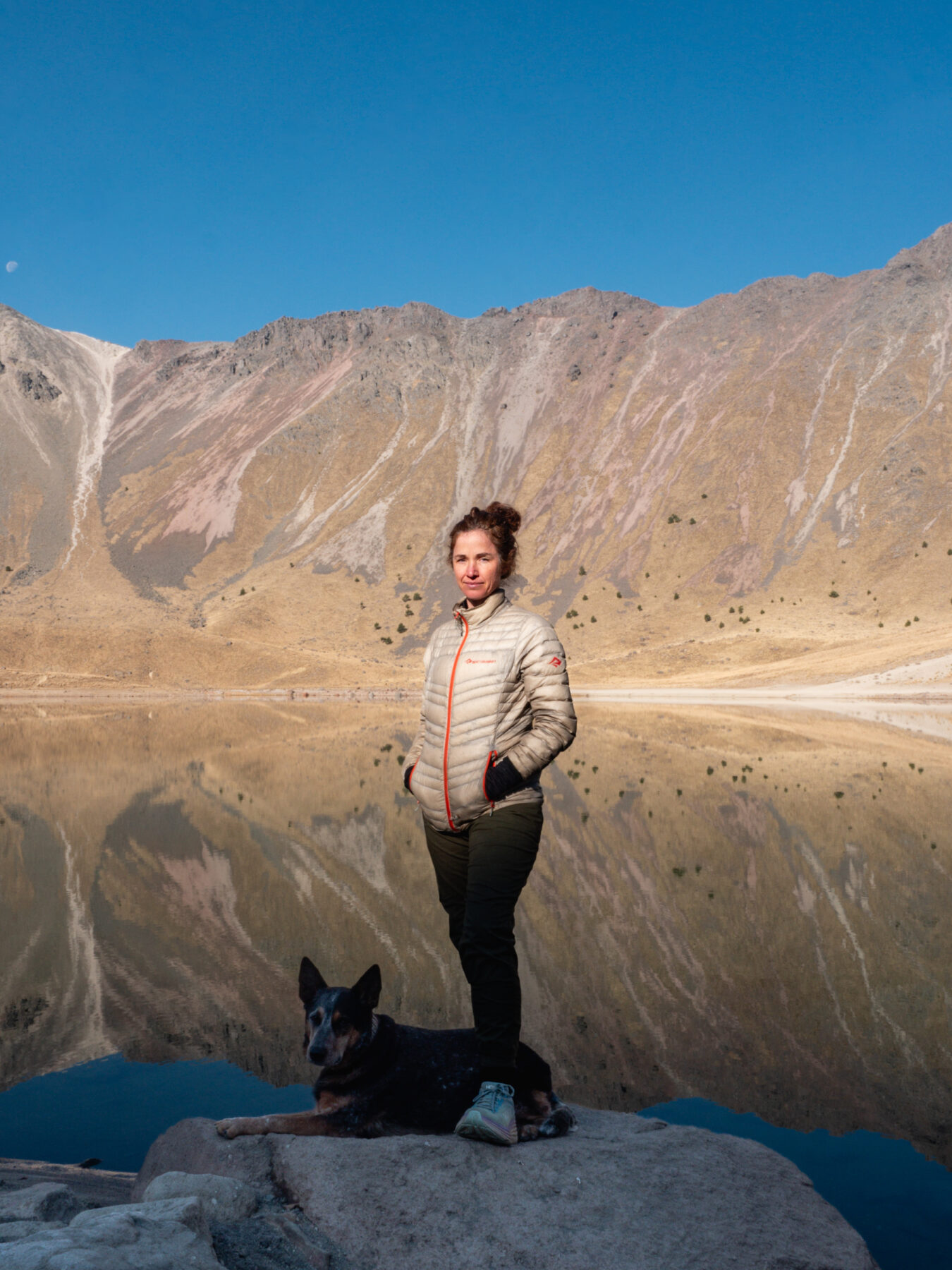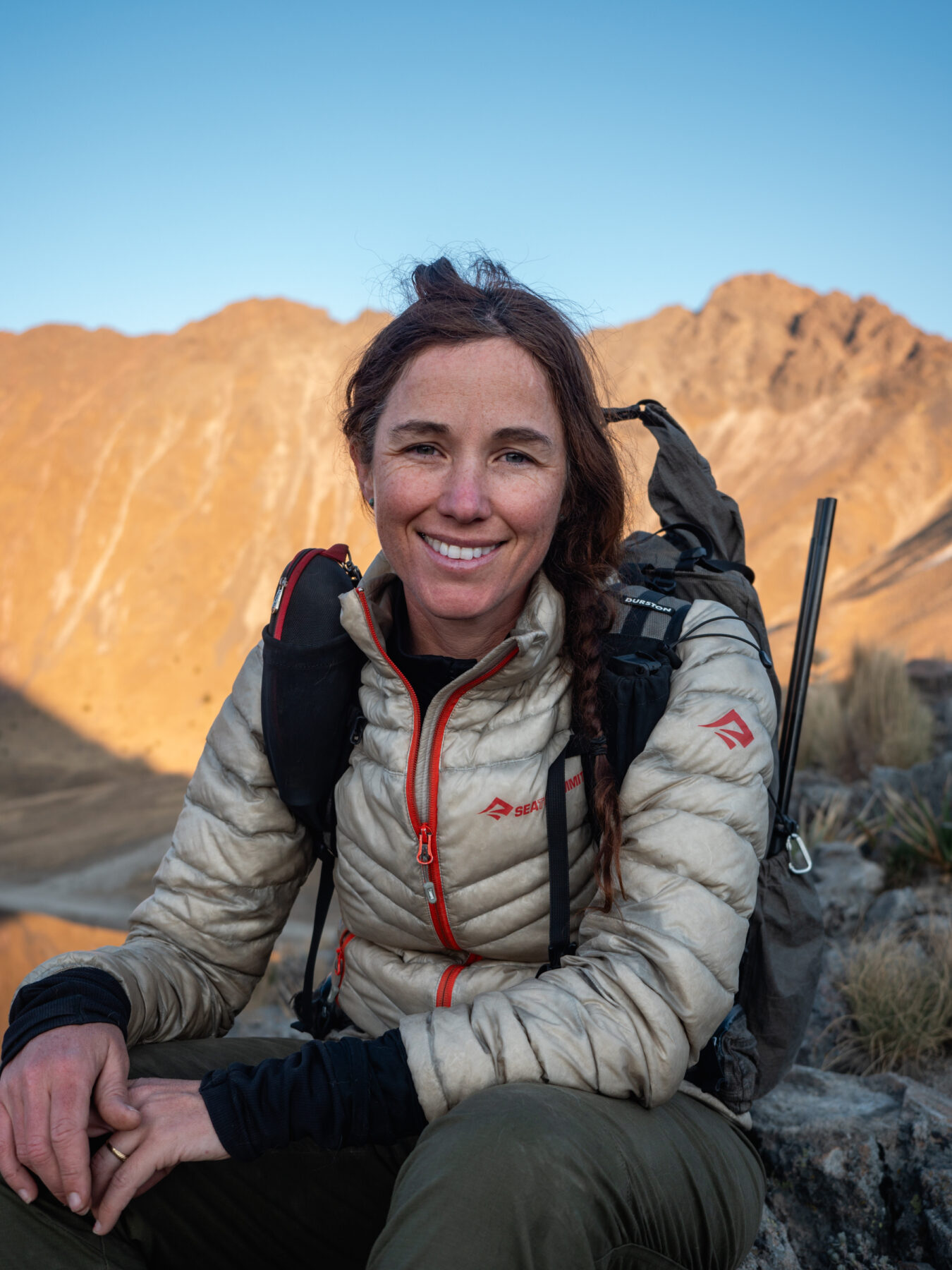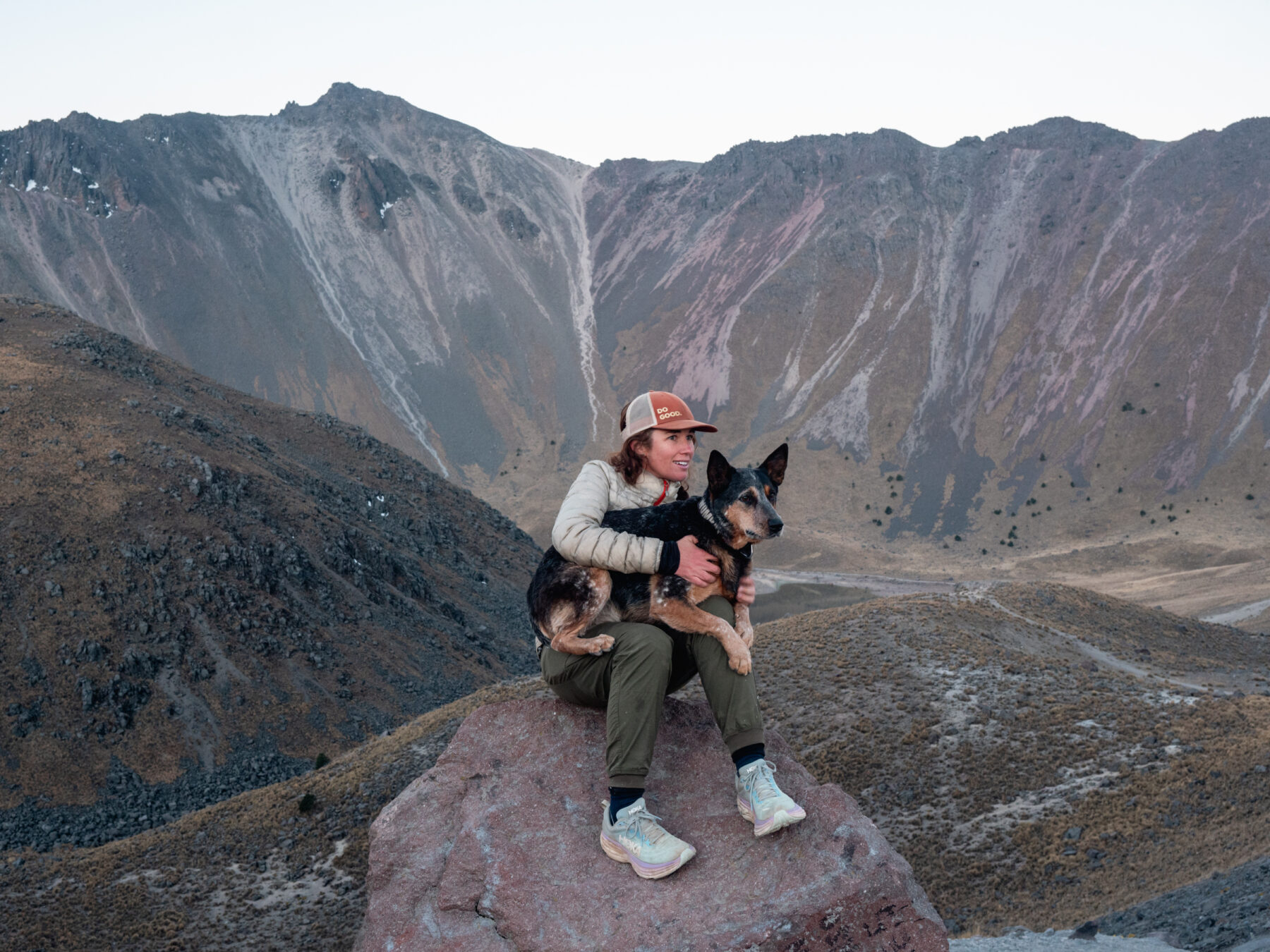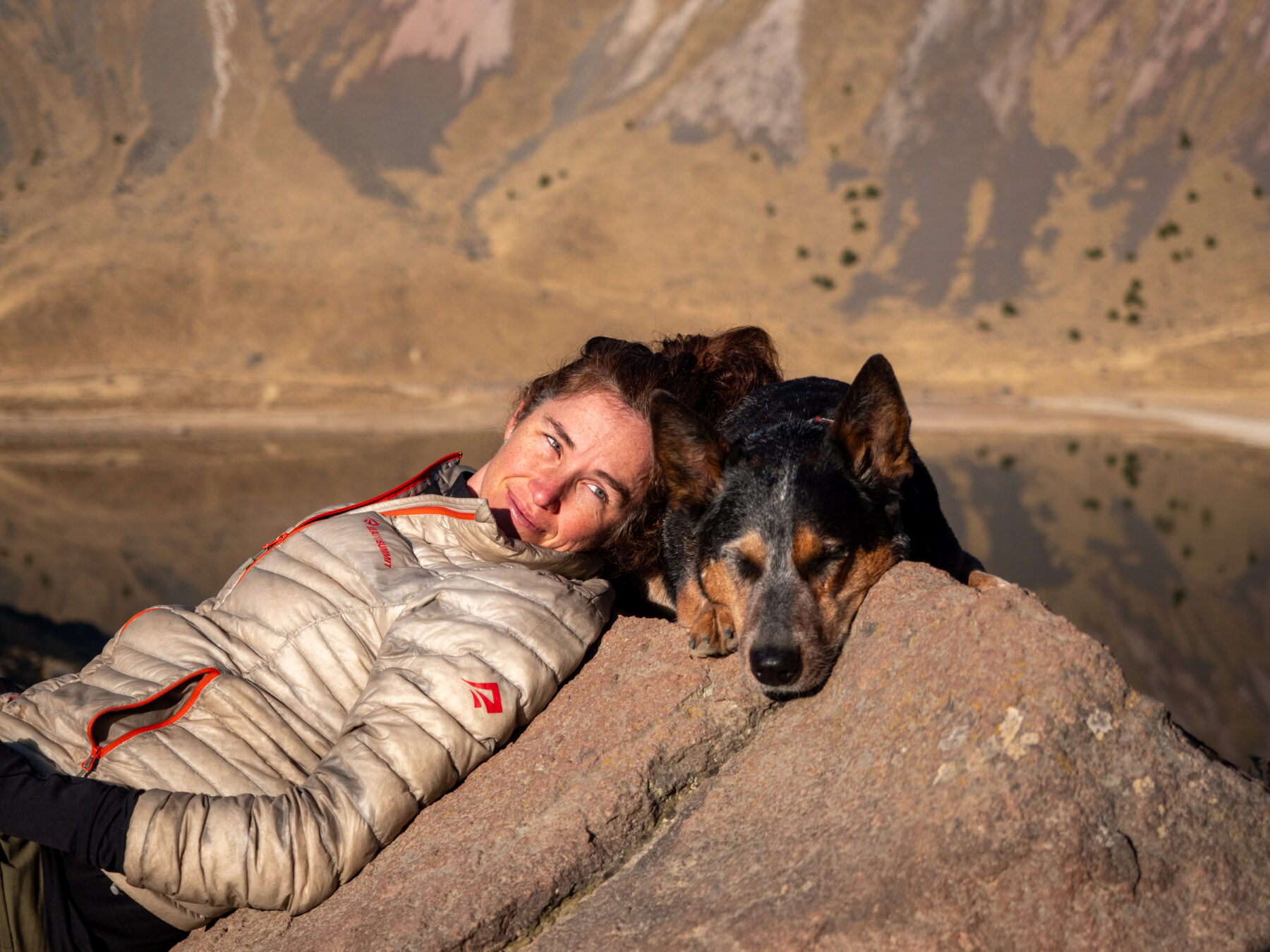For someone who’s spent much of the past seven years alone, Lucy Barnard is clearly a people person. It’s not just her easygoing charm that shines through the instant you start a conversation with her. It’s how she recounts the story of her incredible trek. Woven through her compelling narrative, she speaks with immense love and gratitude of the remote communities, strung out like pearls along lonely South American trails, and the families who took her in, fed and cared for her until she was fit to go on. It’s what’s helped keep Lucy on her arduous path year in, year out.
She’s not always so open when starting a chat with a stranger and has learnt to be guarded. Setting off in 2017, aiming to be the first woman to traverse the length of the Americas south to north on foot, she began in Ushuaia, Argentina, with her end goal being Utqiagvik, Alaska, the northernmost point of North America accessible by foot. It will ultimately be a trek that spans 30,000km across two continents and 13 countries and she’ll be the first woman to achieve this extraordinary feat.
Lucy’s journey was sparked by a desire to push the boundaries of what’s possible while exploring the world in its purest form and experiencing it more intimately. There’s no better way to do this than on foot. Her background in adventure risk management informed her approach to expedition planning and how she responds to threats. These encompass physical challenges posed by the variety of landscapes she’s navigated – from the vertiginous Andes to the dry deserts of Chile and enervating heat of Amazonian rainforests.
They also include the very specific threats of being a woman travelling alone. “I work with a safety and security team. They’re professionals in high-risk environments and adventure, and they’re ex-army,” Lucy says. “I learnt a lot in terms of keeping a low profile and practising scenarios while walking, thinking about what I would do in the event of X, Y and Z happening. When a situation arises, I’m not making decisions based on panic, or being purely reactive. I’m methodical and consider the full scope of the situation, plus other risks that might be layered on top that could make it worse. I come up with the solution that’s best for me. I’m flexible, I know new things will come to light, and I make sure I’m not just fixed on one path.”


The dangers Lucy faces would be shared by anyone tackling an off-the-beaten-track adventure, but there are added risks for women travelling alone. “I’m mindful I’m a single woman and open to different types of human interference from those faced by men,” she says. “They can certainly be robbed and what not, and I have to be very conscious of things like the threat of being raped, but also the general pressure of how surprising it is to everyone that I’m doing this in the first place. I have to carry their fear as my burden.”
Having her adventure credentials and ability to look after herself questioned doesn’t deter Lucy. She’s confident in what she’s doing. She carries the responsibility of her quest with dignity but recognises that if, for any reason, she should fail to reach the end, or be beset by some catastrophe, it won’t be chalked up to bad luck as it might for a bloke, but rather to recklessness on her part.
Critical to Lucy’s journey has been the companionship of her blue heeler dog Wombat. Every year at least four people set off to walk the Americas. Few make it past the end of year one. Knowing this, Lucy waited until the second year to recruit a canine companion. “Security was the practical reason why I wanted to find a dog but I think subconsciously I wanted a friend, because Wombat’s presence was instantly transformative. I stopped grappling with the enormity of my expedition, stopped forcing myself to focus on short term goals and instead, somehow became immersed within them,” Lucy wrote in one of her blog entries en route.
Wombat’s presence has helped her connect with people. The unlikely pair attract attention and support from locals. But Wombat’s somewhat wolf-like appearance also deters unwanted male advances.
Sharing joy with strangers
Some of the most rewarding moments of Lucy’s journey have come during her encounters with remote Indigenous communities and their fascinating cultures. Travelling on foot allows for intimate interactions and she’s been welcomed into homes, embraced by families, shared meals with strangers, had her wounds treated and learnt firsthand about very different ways of life. These cultural encounters have enriched her journey and provided emotional and physical support while opening up new perspectives.
“People understood when I arrived in a small town that I didn’t have family with me, and I must be missing that,” she says. “They would bring me into their homes so I could have that sense of togetherness, family and security within their own family. They would always invite me back and tell me if I wanted to stay longer that I could. It’s those interactions that have chaperoned me across from one town to the next and made it possible for me to continue, especially when the weather was difficult, or when I was unwell.”
Lucy has invitations to return to several hard-to-access villages that require established relationships for entry. “Most of the time I was in areas where the language wasn’t Spanish, so we spoke a blend of Spanish and the local dialect. I have an invitation to return to one place only recently rediscovered, but where the [language] group is dying out,” she explains. “The Incan healers and high priests were forced to hide in secret locations during the Spanish Conquest. They survived and started their own society, but no-one knew where to find them. When a modern road was built near Rainbow Mountain [Vinicunca], they were rediscovered, and because they’re dying out, they have medicines and healing practices they want to share with the world.” It’s a three-day walk to the village and Lucy intends to return once she’s completed her trek.
Indigenous communities in Colombia and Panama have also invited Lucy to return for special celebrations. Once her trek is finished, she plans to return and document firsthand, from a trusted insider’s perspective as an ethnographic writer, the stories of these and other remote peoples she’s met. She is, after all, a natural storyteller. Lucy shares her experience using social media platforms such as Instagram and YouTube, as well as her website, Tangles and Tails.


The updates have garnered a worldwide audience, helping her to become an influential figure in the global adventure and exploration community. It’s her honesty and authenticity that have resonated with people everywhere, especially women, encouraging them to explore beyond their comfort zone.
On 3 March 2023 she crossed the dangerous border known as the Darién Gap from Colombia into Panama, making her the first woman to walk the length of South America, 11,100km across five countries – Argentina, Chile, Peru, Ecuador and Colombia. Since then, Lucy has passed through Central America and faced the perils of the cartels of northern Mexico, notorious for kidnappings and violent murders. She engaged a support vehicle to shadow her journey through to the US border. Wombat’s a big fan. “He walks with me in the morning and then when he sees the van, he knows that he gets to have the rest of the day off. He’s never been happier,” Lucy says. “It’s like he’s living his best life.”
She will continue north through the USA and Canada, tapping into their well-established hiking cultures. “I’m following an existing trail through the USA, so there’s a lot of help along the way,” Lucy says. “And the hiking community is so close-knit that once one person knows you’re on your way, everyone looks out for you.” Except for a COVID hiatus from 2020 to ’22, when she was forced to return to Brisbane, Lucy’s been on the road for seven years. Has the journey changed her? “I’m more or less the same person, but now I just have more confidence that this is what I really want to be doing. I’ve also become more aware of how important it is to experience touch. I have to put myself on a pedestal as part of my security measures, so no-one ever touches me. But when friends visit, like my friend Bailey Seamer [also a long-distance walker] who was just here, she and I pretty much just sat on top of each other the whole time because I’m so starved of human contact.”
Lucy, who turned 42 this year, is not in a hurry. She’s not actively chasing records, despite inevitably collecting them along the way. She’s going where the road takes her – as long as it’s north. “I’m only going to be able to do this once in my life. Even though there’s a culture of speed-hiking, and that’s something a lot of people really strive for, the greatest shame of this walk would be to look back on it and wish I’d spent more time somewhere.”
Follow Lucy’s travels at tanglesandtail.com


